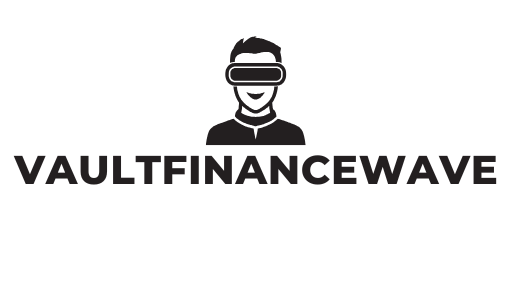Table of Contents
ToggleIn today’s global economy, exchange rates play a crucial role in international trade and finance. The USD to ZMW exchange rate, which reflects the value of the US dollar against the Zambian kwacha, is particularly significant for businesses and travelers alike. Fluctuations in this rate can impact everything from import costs to travel budgets, making it essential for individuals and companies to stay informed.
Understanding the dynamics behind the USD to ZMW exchange rate helps navigate the complexities of currency conversion. Factors such as economic indicators, political stability, and market sentiment all influence this rate. By keeping an eye on these elements, one can make more informed decisions whether investing in Zambian markets or planning a trip to Zambia.
Overview of USD to ZMW Exchange Rate
The USD to ZMW exchange rate represents the value of the United States Dollar in relation to the Zambian Kwacha. This rate influences various financial activities in Zambia, impacting trade, travel, and investment decisions. Current fluctuations in the exchange rate can stem from multiple factors, including economic performance, inflation rates, and foreign investment trends.
Factors Influencing the Exchange Rate
- Economic Indicators: Key reports like GDP growth, unemployment rates, and inflation levels significantly affect investor confidence and market dynamics.
- Political Stability: The political climate in Zambia can sway foreign investment and currency perception. Political unrest generally weakens the ZMW, while a stable environment strengthens it.
- Market Sentiment: Speculation in the foreign exchange market greatly influences short-term fluctuations. Positive news about Zambian economic developments often prompts an appreciation of the ZMW.
Historical Trends
The exchange rate has shown notable volatility over recent years. Changes often correlate with shifts in global commodity prices, particularly copper, which is vital to Zambia’s economy. The table below captures significant historical exchange rate data over the past year.
| Date | USD to ZMW Rate |
|---|---|
| January 2023 | 17.50 |
| April 2023 | 19.00 |
| July 2023 | 20.25 |
| October 2023 | 21.10 |
Regular monitoring of the USD to ZMW exchange rate is essential for anyone involved in Zambian markets, whether for importing goods, investing, or travel planning. Staying informed on trends and shifts helps in making better financial decisions in an evolving economic landscape.
Factors Influencing the Exchange Rate

Several key factors influence the USD to ZMW exchange rate, impacting individuals and businesses engaged in trade and investment in Zambia.
Economic Indicators
Economic indicators play a vital role in determining the USD to ZMW exchange rate. Notable indicators include:
- Gross Domestic Product (GDP): A rising GDP indicates economic growth and often strengthens the Zambian Kwacha against the U.S. dollar.
- Inflation Rate: Higher inflation in Zambia typically weakens the ZMW as purchasing power diminishes, making imported goods costlier.
- Interest Rates: Changes in Zambian interest rates can attract foreign investment, affecting currency demand and exchange rates.
- Foreign Investment: Increased foreign direct investment signals confidence in Zambia’s economy, positively influencing the ZMW.
Political Stability
Political stability significantly impacts the USD to ZMW exchange rate. Critical aspects include:
- Government Policies: Stable and favorable policies attract investment, enhancing the Zambian Kwacha’s value.
- Election Outcomes: Uncertainty surrounding elections can lead to currency depreciation due to investor caution.
- Corruption and Governance: Transparency and effective governance attract foreign investors, thereby strengthening the ZMW if improved.
- Social Unrest: Instances of political unrest can destabilize the currency, leading to decreased confidence among global investors.
Monitoring these factors enables stakeholders to make informed decisions regarding investments and travel to Zambia.
Historical Trends of USD to ZMW Exchange Rate
Analyzing the historical trends of the USD to ZMW exchange rate reveals significant fluctuations that affect economic interactions. Understanding recent changes and long-term patterns provides valuable insights for businesses and travelers.
Recent Changes
Recent changes in the USD to ZMW exchange rate exhibit notable volatility influenced by local and global factors. As of October 2023, the exchange rate hovers around 22 ZMW per 1 USD. This marks a depreciation of the Zambian Kwacha compared to previous months, driven by rising inflation rates and adjustments in foreign direct investment. Currency intervention by the Bank of Zambia aims to stabilize the Kwacha, while external factors such as global commodity prices also play a crucial role in shaping the current exchange dynamics.
Long-term Patterns
Long-term patterns of the USD to ZMW exchange rate indicate substantial variability. Over the last two decades, the exchange rate has experienced periods of both appreciation and depreciation, often correlating with Zambia’s economic performance and global copper prices. For instance, between 2015 and 2018, the Zambian Kwacha weakened significantly due to declining copper prices and fiscal instability, where the exchange rate surged from approximately 10 ZMW to over 20 ZMW for every USD. Conversely, improvements in economic policy and increased copper production following 2019 provided stability, leading to a brief appreciation of the Kwacha. Tracking these patterns helps stakeholders understand the historical context behind current exchange trends and make informed financial decisions.
How to Monitor the Exchange Rate
Monitoring the USD to ZMW exchange rate is essential for those engaged in international trade, travel, or investment in Zambia. Utilizing the right tools and resources enables stakeholders to stay informed about fluctuations and trends.
Online Tools and Resources
Several online tools streamline the process of tracking the USD to ZMW exchange rate.
- Currency Converter Websites: Websites like XE.com and OANDA provide real-time exchange rates and historical data.
- Mobile Applications: Apps such as XE Currency and Currency Converter Plus allow for easy monitoring on the go, featuring alerts for significant rate changes.
- Finance Platforms: Platforms like Bloomberg and Investing.com offer comprehensive financial information, including in-depth analyses and expert forecasts related to currency pairs.
- Central Bank Resources: The Bank of Zambia’s official website publishes current rates and insights into currency policy, providing critical information for stakeholders.
Financial News and Updates
Staying updated on financial news directly impacts understanding of exchange rates.
- Economic Reports: Reports from reliable sources such as the International Monetary Fund (IMF) and World Bank detail economic conditions affecting the Zambian Kwacha.
- Market Analysis: Financial news outlets like Reuters and CNBC provide timely analyses of political events and market movements impacting currency values.
- Social Media: Financial analysts and institutions leverage social media platforms to share updates and insights quickly, making it a useful resource for immediate information.
- News Aggregators: Tools like Feedly and Google News aggregate articles from various financial sources, enabling users to customize their content feed related to financial trends and currency rates.
By leveraging these resources, individuals and businesses can effectively monitor the USD to ZMW exchange rate, allowing them to make informed decisions regarding investments and travel to Zambia.
Monitoring the USD to ZMW exchange rate is vital for anyone involved in trade or travel to Zambia. Staying informed about fluctuations can help individuals and businesses manage their finances effectively. Utilizing available online tools and resources allows for real-time tracking of exchange rates and economic indicators.
Understanding the factors that influence this exchange rate, such as economic performance and political stability, equips stakeholders with the knowledge needed to make sound financial decisions. With Zambia’s economy closely tied to global commodity prices, particularly copper, awareness of these dynamics is essential for navigating the complexities of currency exchange. Keeping abreast of these developments will ultimately lead to better investment and travel outcomes in Zambia.




